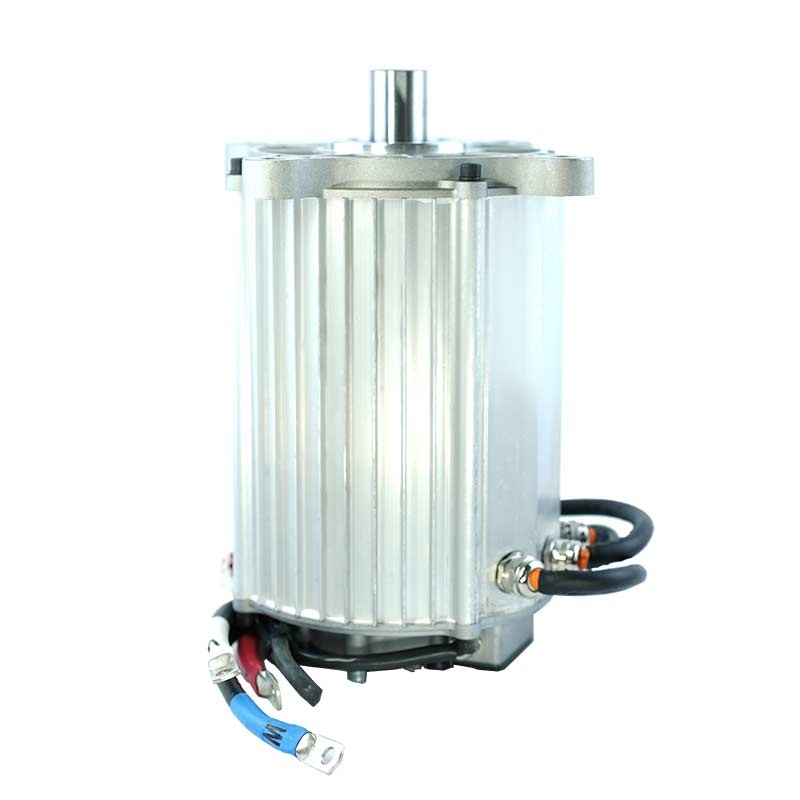![]()
Compared with horizontal motors, the most significant difference between vertical motors and horizontal motors is the different installation methods, followed by the different structural design solutions derived from this. Under normal circumstances, the basic series of motors with center heights of 225 and below in frame sizes generally only have different installation methods during use. As long as the installation interfaces match, they can operate normally. When the frame size is larger, or the motor bearings and casing are not sufficient to carry the specified external force or the external force exerted during actual operation, the structural design plan will be greatly different. For example: use bearings or bearing components that can carry larger axial forces, increase the strength of the shell, design special end caps, bearing caps, etc.
In addition to the above-mentioned installation interface forms and necessary adjustments to the structure and rotating component support methods, the motor tests are also quite different. Especially for large vertical motors, not only the necessary tooling must be designed, but sometimes other auxiliary measures and relatively accurate equivalent test methods must be taken. The inspection test does not require a coupling test of two motors. It only needs to be considered that the bearings will not be damaged when the motor rotates. However, during type testing, necessary tooling must be considered. Some equivalent tests such as the overlapping frequency method will be used during the test. The equivalent test method will naturally have some deviations, but in most cases the resulting deviations are usually acceptable. A few demanding customers will obviously not tolerate such deviations. For example, motor manufacturers use horizontal structures to evaluate the performance of vertical motors, and some users simply do not accept type testing by changing the original structure of the motor.Knowledge expansion - vertical motorA vertical motor is a motor in which the axis line of the output shaft is perpendicular to the chassis or the transmission mechanism. Its outstanding feature is that the mounting holes are centered on the output shaft and distributed equidistantly around it. The vertical motor is arranged vertically on the driven machine, and the motor shaft also drives the machine vertically. It is widely used in industrial production, such as vertical water pumps, vertical lathes, etc.

The vertical motor model consists of two parts, product code and specification code, arranged in sequence according to the provisions of GB4831. The product code is represented by the motor series code, such as:
YL represents a squirrel cage rotor three-phase vertical asynchronous motor that does not bear axial force; YLST represents a squirrel cage rotor three-phase asynchronous motor that bears axial thrust; YKKL represents a fully enclosed three-phase squirrel cage rotor with air-to-air cooler Type asynchronous motor, YKSL means fully enclosed squirrel cage rotor three-phase vertical asynchronous motor with air-water cooler, etc.Most vertical motors adopt the internationally popular box structure. The square base is made of welded steel plates, which has the advantages of good rigidity and light weight. The covers or air (water)-air coolers on both sides of the base are changed. Constituting different series of electric motors. Most stators adopt an external press-fit structure, and their stator windings are made of F-class insulation materials and anti-halation materials. The winding ends are fixed using a special binding process, which is strong and reliable. The entire stator is processed by vacuum pressure impregnation with F-class solvent-free paint. The motor has excellent and reliable insulation performance, moisture-proof and impact resistance.

The rotor adopts a cast aluminum rotor or copper bar rotor structure depending on the size of the motor rotor. No matter what structure the rotor is used, its structure and manufacturing process can ensure reliable operation of the motor. Depending on whether the motor bears axial force or the amount of axial force it bears, the upper bearing structure of the motor has two types: rolling bearing or sliding bearing, and the lower bearing structure is a rolling bearing. Motors with rolling bearing structures are equipped with non-stop grease filling and draining devices. The main outlet box is a sealed structure with a protection level of IP54. The cable entry hole of the outlet box can be switched up, down, left, and right. There is a separate grounding terminal in the box.





























 XINDA
XINDA